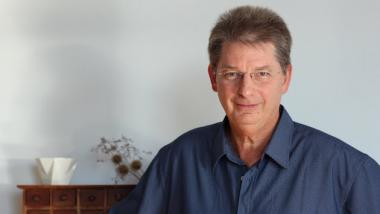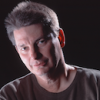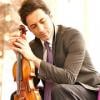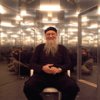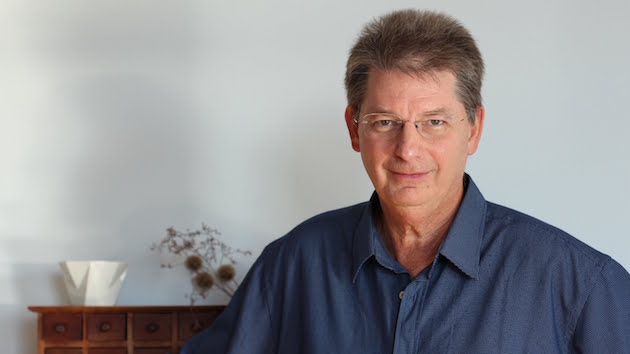
He’s gratified to have relocated ensemble headquarters and studio this month to a much larger space in the Bay Bridge Industrial Center in Oakland, but Paul Dresher has never been comfortable with having his prolific musical output pigeonholed. Variously described, over his five-decade career, as a mininalist and a postmiminalist, the L.A.-born Dresher, now 67, humorously posited the term “pre-maxi-minimalist” and went on to christen his own record label MinMax.
He got a B.A. in music from UC Berkeley and an M.A. in composition from UC San Diego, where his mentors included Robert Erickson, Pauline Oliveros, Bernard Rands, and Roger Reynolds. Separately, he studied Ghanian drumming and Hindustani, Balinese, and Javanese music.
Dresher’s work in musical theater, opera, chamber, vocal, and orchestral composition has involved both standard and invented musical instrumentation and electronics, and he’s been commissioned by the San Francisco Symphony, the Spoleto Festival, Kronos Quartet, and others. His works have been performed throughout the world, and he’s recorded for his own and other labels, including New Albion. Dresher, a man of infectious erudition and commitment, invited SFCV to his new facility, where he talked about this week’s production at Z Space (Jan. 26–27) as well as his past explorations.
What’s new about these upcoming concerts?
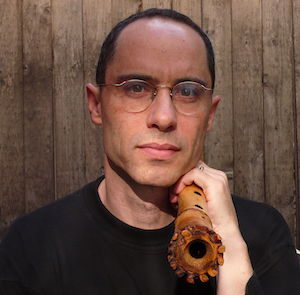
It features all new music, in two parts. The second part, Beyond C, by Ned Rothenberg, is the world premiere of a concerto for soloist and large ensemble, where the composition of the ensemble is variable. It’s inspired by Terry Riley’s In C, which Terry wrote in 1964 and I heard when I was 17 and moved to Berkeley. I was playing music on Telegraph Avenue, improvising on some instruments I’d made in high school. I had a hat out, and payment was in a mix of money and chemicals. I’d buy records on the street, and there was this guy in front of Cody’s Books with this record, In C, for 25 cents. I said, “What’s this?”, and he said, “It’s awful”. I bought it, and it changed my life.
How?
I was not a beginner in contemporary music; my father was an extremely avid consumer of all kinds of music — contemporary, classical, jazz, rock ‘n’ roll — and the radio was on all the time. What struck me about In C was, this was the music I imagined in my head but had never heard manifest in the real world: constantly evolving, where on the metalevel it might sound static, but when you move into it, it’s incredibly rich. And I really liked that it was modal, as opposed to 12-tone. It felt like a completely natural place of ecstasy.
What did you find in common with Ned?
He doesn’t work in equal temperament, and my [invented] instruments often play the natural harmonic series. Ned’s notes are shifting, they’re not clear pitches, they’re changing in pitch and timbre. His shakuhachi [Japanese reed flute] does exactly that.
How does Beyond C work?
It’s in five sections or movements. The first couple adhere more closely to an In C model, where every musician has a set of measures or modules that they move through. At the beginning, they’re mostly modal or diatonic, but as the piece progresses, it becomes harmonically much richer. Ned and I also share an affinity for and time spent studying African music, and there will be a metrical groove approach that is really more akin to Africa, where what the two percussionists are doing is constantly changing their subdivision from two to three.
And how does the soloist work with the ensemble? There’s also a conductor?
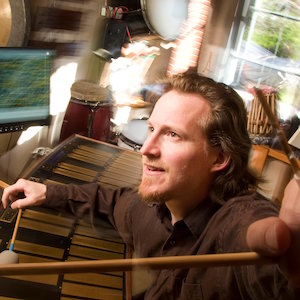
There are ten instrumentalists, each has his or her own notation, much like In C, that you progress through. The conductor is Joel Davel, who’s my longtime percussionist, and he’s sharping the overall thing while listening to Ned, who is improvising [on shakuhachi] from a body of material that he’s created, based on what he’s hearing the ensemble produce. Joel has a series of hand signals, and the musicians are in pairs of instruments: two violins, two woodwinds, two percussions, two celli, two electric guitars, two violins. And one contrabass.
Who’s that single bass?
Lisa Mezzacappa.
I might have guessed.
We have an all-star group here, of chamber musicians and improvisers. They’re playing what’s notated, but they get to shape a lot about how they interact with the pulse and time. You remember how In C works, because people are repeating things, right? Wonderful resultant phrases happen that nobody is playing by themselves.
What will your role be?
Other than being the producer, presenter, and curator? And choosing all the musicians? I haven’t decided whether I’m going to be one of the musicians in Beyond C, or whether I’ll represent the overriding aesthetic principle, at the mixing console.
Does this new piece represent any kind of new direction?
I think what Ned is trying to do is bridge the world of the improvising musician and the chamber musician, who reads music. Ned has always railed against that division.
I thought it was common knowledge that much great classical music came from improvisers.
They still don’t like to admit it, but Beethoven was a great improviser. And I’m sure that his cadenzas, at least early in his career, weren’t the same every time. I heard once that Leopold Weiss, the great lutenist/composer, jammed with Bach. Wouldn’t it have been lovely to have been a fly on the wall!
Tell us about the first part of this week’s program.
I’ve always felt that it’s really important for my organization, which has some resources that younger artists don’t have, to promote the next generation of artists. In this program, we’ll have The Living Earth Show, which is just a wonderful young duo of electric guitar and percussion [Travis Andrews and Andy Meyerson, respectively]. They’re both recent graduates of the San Francisco Conservatory, and they exemplify what is absolutely the best of young chamber musicians: they can play any notated music! They play Brian Ferneyhough from memory. When I was young, you didn’t play Terry Riley and Boulez, nobody did that, but these younger players go both ways, and they can play funk, grooves. They don’t see those things as naturally opposed to each other.
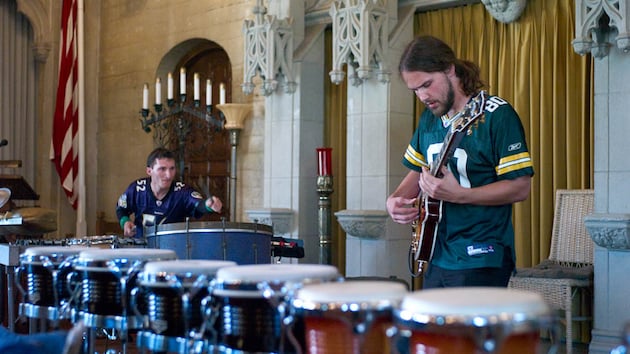
You yourself had some time in rock.
Yes, in my late teenage years and early twenties I made my living playing the experimental fringe of rock, though after I did my first record deal, I realized that there was no way that what I was interested in in music was going to work in the rock world.
What about these young guys?
There’s a composer named Dennis Aman, who I’ve known because he was one of the resident artists in our rehearsal studio, and an instrument builder and chamber music composer. He knows the folks from The Living Earth Show, and he proposed a project called 24 Preludes and Fugues. Inspired on the Bach model, where Bach explored all 12 keys, in a prelude and a fugue, Dennis is building instruments that explore all equal temperaments, from one to twenty-four divisions of the octave. For Travis, they’re guitar-like instruments with completely unique fretboards that take the octave into different subdivisions. We’re gonna do about 20 to 30 minutes of his music, and each section will be played on a different invented instrument.
What will follow in the new year?
Joel [Davel] and are a going to do a full concert at the Community School of Music and Arts in Menlo Park , for their first-ever electronic music festival [on April 15]. And we’re going to bring almost the same concert to the ODC Theater on Memorial Day weekend. That will represent the quintessence of what I’m talking about in invented instruments — visual, mechanical, and acoustic — and what can be put into contemporary computer technology and have its sound manipulated.

